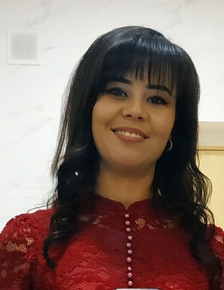Activity "Multiple Intelligence "
Procedure:
- Talk as many people as you can in a minute.
- Sit quietly for a minute and see if you can keep your mind from thinking about anything
- Draw 8 with your eyes and hands
- How many seconds are there in a twenty-four hour day?
- Write an essay about a perfect minute.
- Teacher plays the classic tune and pupils should conduct imaginary orchestra
- Draw a picture of a one minute clock.
- How many differences and similarities can you find between two pairs of hands.
After doing all the tasks we discussed what activity we liked and disliked. Explained why and found out in what intelligence we are strong.
Dr. Gardner proposes eight different intelligences to account for a broader range of human potential in children and adults.
These intelligences are:
- Linguistic intelligence (“word smart”)
- Logical-mathematical intelligence (“number/reasoning smart”)
- Spatial intelligence (“picture smart”)
- Bodily-Kinesthetic intelligence (“body smart”)
- Musical intelligence (“music smart”)
- Interpersonalintelligence (“people smart”)
- Intrapersonal intelligence (“self smart”)
- Naturalis tintelligence (“nature smart”)
1.Verbal-Linguistic Intelligence -- well-developed verbal skills and sensitivity to the sounds, meanings and rhythms of words
2.Mathematical-Logical Intelligence -- ability to think conceptually and abstractly, and capacity to discern logical or numerical patterns
3.Musical Intelligence -- ability to produce and appreciate rhythm, pitch and timber
4.Visual-Spatial Intelligence -- capacity to think in images and pictures, to visualize accurately and abstractly
5.Bodily-KinestheticIntelligence -- ability to control one's body movements and to handle objects skillfully
6.Interpersonal Intelligence -- capacity to detect and respond appropriately to the moods, motivations and desires of others.
7.Intrapersonal Intelligence -- capacity to be self-aware and in tune with inner feelings, values, beliefs and thinking processes
8.Naturalist Intelligence -- ability to recognize and categorize plants, animals and other objects in nature
|
Learner type |
Is good at |
Learns best by |
Activities |
|||
|
Linguistic |
Reading, writing and stories |
Saying, hearing and seeing words |
Memory games |
|||
|
Logical / mathematical |
Solving puzzles, exploring patterns, reasoning and logic |
Asking questions, categorising and working with patterns |
Puzzles |
|||
|
Visual / Spatial |
Drawing, building, arts and crafts |
Visualising, using the mind's eye |
Flashcards |
|||
|
Musical |
Singing, listening to music and playing instruments |
Using rhythm, with music on |
Usingsongs |
|||
|
Bodily / Kinaesthetic |
Moving around, touching things and body language |
Moving, touching and doing |
TPR activities |
|||
|
Interpersonal |
Mixing with others, leading groups, understanding others and mediating |
Co-operating, working in groups and sharing |
Mingle activities |
|||
|
Intrapersonal |
Working alone and pursuing own interests |
Working alone |
Working individually on personalised projects |
|||
|
Naturalistic |
Nature |
Working outside and observing nature |
Environmental projects |
|||
Gulnora Abdullayeva

